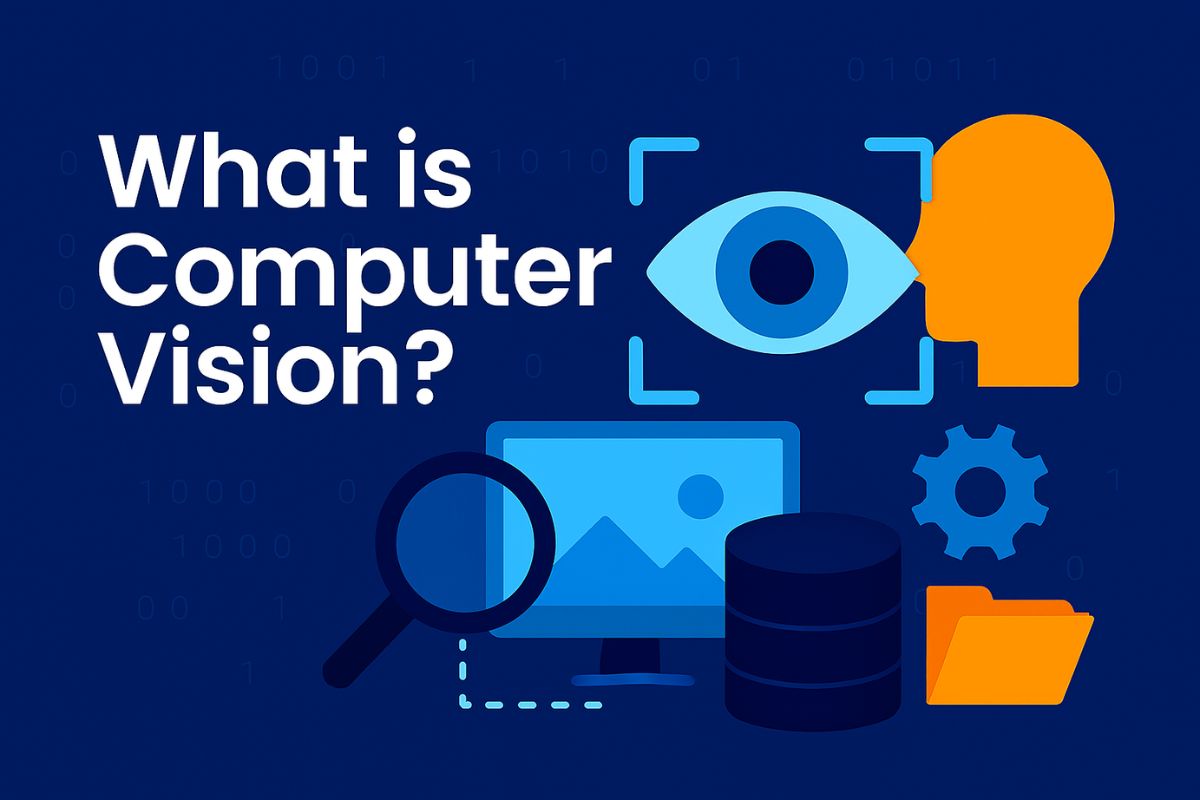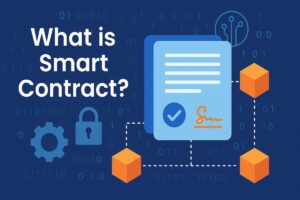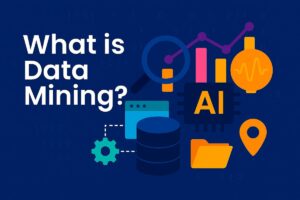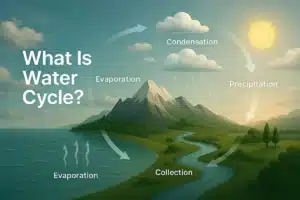Computer vision is a branch of artificial intelligence that enables machines to interpret and understand visual data like images and videos. This guide explains how computer vision works, real-world applications, its growing role in industries, and upcoming trends in 2025 such as generative AI and Vision Transformers. Ideal for students, professionals, and tech enthusiasts.
Imagine your phone unlocking just by looking at your face or a self-driving car identifying traffic signs on the road. These are not futuristic dreams—they’re real-world applications of computer vision, one of the most exciting subfields of artificial intelligence (AI). As we enter 2025, computer vision is becoming more sophisticated, transforming industries and everyday experiences.
In this blog, we’ll explore what computer vision is, how it works, its real-life applications, and what the future holds. Whether you’re a student, tech enthusiast, or business leader, this guide will simplify the complex world of computer vision.
What is Computer Vision?
Understanding Computer Vision in Simple Words
Computer vision is the technology that allows machines to “see” and understand visual information from the world—just like humans do. It involves teaching computers to process, analyze, and interpret digital images and videos using AI and deep learning.
Real-life example: When you upload a photo to Google Photos and it automatically recognizes faces, objects, or locations—that’s computer vision at work.
Brief History of Computer Vision
- 1960s: Initial experiments on enabling computers to recognize typed or handwritten text.
- 1980s–1990s: Emergence of algorithms for image analysis and feature detection.
- 2012: Breakthrough in deep learning—ImageNet competition saw a deep neural network outperform traditional methods.
- 2020–2025: Rise of Vision Transformers (ViTs), multimodal AI, and generative models enhancing CV performance.
How Computer Vision Works
Step-by-Step Process
- Image Acquisition: Capturing images or video from cameras or sensors.
- Preprocessing: Enhancing image quality (resizing, filtering, normalization).
- Feature Extraction: Detecting edges, textures, patterns using algorithms.
- Model Prediction: Using AI models like CNNs or Vision Transformers to classify or detect objects.
Techniques Used
- Image Classification: Assigning a label to the entire image.
- Object Detection: Identifying objects and their positions.
- Semantic Segmentation: Assigning each pixel to a specific object.
- OCR (Optical Character Recognition): Converting text in images into editable text.
Real-Life Applications of Computer Vision
Healthcare
- Detecting tumors in X-rays and MRIs
- Automating medical diagnostics
Automotive
- Self-driving cars identifying pedestrians and traffic signals
- Advanced Driver Assistance Systems (ADAS)
Retail & E-commerce
- Virtual try-ons for fashion
- Visual product searches
Security & Surveillance
- Facial recognition systems in airports and cities
- Real-time crowd analysis and anomaly detection
Agriculture & Industry
- Monitoring crop health via drones
- Detecting manufacturing defects
Types of Computer Vision Tasks
| Task Type | Description | Example Use Case |
|---|---|---|
| Image Classification | Label the entire image | Identify if photo has a cat |
| Object Detection | Locate and label objects | Detect cars on the road |
| Semantic Segmentation | Label each pixel in an image | Medical image segmentation |
| Optical Character Recognition (OCR) | Extract text from images | Digitize handwritten notes |
| Action Recognition | Detect actions or gestures in videos | Sports highlight automation |
Computer Vision in 2025: Trends and Future Scope
Latest Trends
- Vision Transformers (ViTs): Outperform CNNs in many benchmarks.
- Generative AI: Text-to-image generation using tools like DALL·E.
- Multimodal AI: Combining vision + language (e.g., GPT-4o).
- Edge AI: Running models on smartphones, drones, and IoT devices.
- 3D Vision and AR/VR: Depth perception and immersive environments.
Future Career Opportunities
- CV Engineer or AI Developer
- Medical Imaging Specialist
- Autonomous Vehicle Developer
- AI Researcher in Computer Vision
The global computer vision market is projected to exceed $60 billion by 2030, driven by demand in healthcare, automotive, and retail sectors.
Benefits of Computer Vision
- Speeds up manual tasks (e.g., inspection, data entry)
- Improves accuracy in medical and industrial settings
- Saves costs in large-scale monitoring
- Enhances user experience (e.g., visual search)
- Scales well for real-time and large-volume tasks
Common Challenges & Limitations
- Privacy concerns: Surveillance and face recognition ethics
- Bias: Underrepresented data causing skewed results
- Hardware demands: Needs GPUs, cameras, and fast storage
- Environmental sensitivity: Lighting, angle, or obstructions can affect accuracy
Expert Tips to Get Started in Computer Vision
- Learn Python and libraries like OpenCV, PyTorch, TensorFlow
- Use public datasets: ImageNet, COCO, CIFAR-10
- Start simple: face detection, object classification, barcode scanning
- Follow communities: Ultralytics, Roboflow, OpenCV forums
Free Resources
| Tool | Description | Website |
| OpenCV | Open-source computer vision library | https://opencv.org |
| CVAT | Annotating images for training datasets | https://cvat.ai |
| Roboflow | Upload datasets, annotate, train models | https://roboflow.com |
Conclusion
Computer vision is revolutionizing how machines interact with the world—from recognizing human faces to diagnosing diseases and powering smart vehicles. As we move further into 2025, CV is no longer niche—it’s essential.
Whether you’re a student, AI enthusiast, or a decision-maker, now is the time to understand and invest in this technology. Explore other articles on Schoolication to dive deeper into AI, ML, and future technologies.
FAQs
Q1. What is computer vision in AI?
It’s the field where computers are trained to interpret and analyze visual data using artificial intelligence.
Q2. How does computer vision work?
It processes images using AI models that extract features and classify or detect objects in the data.
Q3. Where is computer vision used in real life?
In self-driving cars, medical diagnosis, e-commerce, surveillance, agriculture, and more.
Q4. What are the latest trends in computer vision?
Vision Transformers, edge AI, generative models, and multimodal AI are dominating 2025.
Q5. Can I learn computer vision without a coding background?
You can understand the basics, but to build solutions, learning Python and AI tools is essential.
Q6. Is computer vision related to machine learning?
Yes, it heavily uses ML and deep learning techniques like CNNs and ViTs.
Q7. What skills do I need to start a career in computer vision?
Python, OpenCV, PyTorch/TensorFlow, basic math, and understanding of AI/ML principles.



